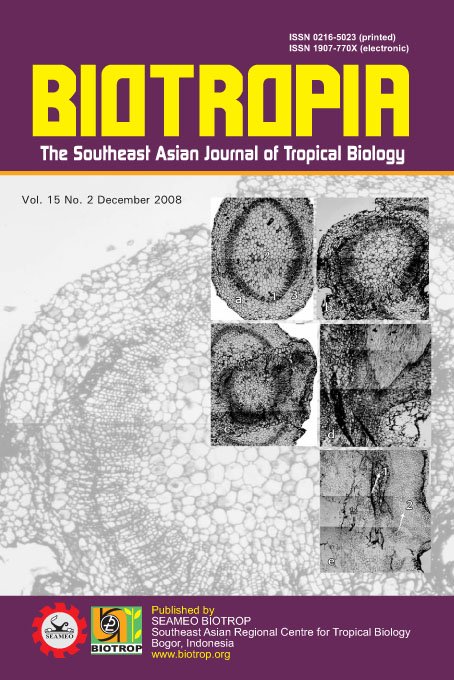
Tags
TAXOMETRICS CLASSIFICATION (HIERARCHICAL AND ORDINATION) OF AQUATIC AND SEMI-AQUATIC MOSSES: A PRELIMINARY MODEL TO BRYODIVERSITY MANAGEMENT
Content Language : English

Bryodiversity is naturally serving the ecosystems sustainably. It serves the environments by preventing natural disaster (flooding), maintaining the quality of the water body and filter or treats the pollutants naturally. Efficient bryodiversity management is needed for environmental cost cutting and have a cost-effective management strategy. To achieve this, cluster and principal component analyses (PCA) were manipulated to produce the linkage distance between the OTUs and identify the important groups of characters, respectively. In return, it becomes a guideline for bryoflora and environmental managements. In this study, 23 OTUs and 156 characters were analyzed. The output from the reliability and item analysis showed that the data set is highly reliable (Cronbach’s alpha = 0.9627). From the cluster analysis, it showed that 5 clustered groups (manageable units) could be derived from the produced phenogram. This is based on the nearest neighbour amalgation rule and Euclidean distances. As for the principal component analysis, three factors were derived and explained 75.1064% of the variation with 56.0485%(PC1), 11.7346%(PC2) and 7.3233%(PC3), respectively. The ordination showed that 5 manageable units were derived from PC1 and 3 manageable units for PC2 and PC3, respectively. In conclusion, conservation should precede any biodiversity management plans.
Link

This work is licensed under a Creative Commons Attribution-NonCommercial-NoDerivatives 4.0 International License.
